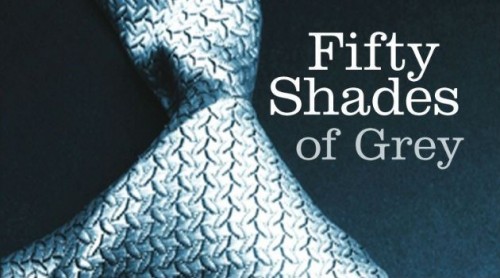Let’s Get Reel: Fifty Shades of Grey
E.L. James’ Fifty Shades Trilogy has become the voice of my generation’s sexuality, and I wish it would stop speaking. I remember being 16 years old and so excited that a romance novel had finally become famous under the false hope that perhaps the series would aid my peers in uncovering the truth of their sexuality. Not far into the plot, I realized I was very wrong. The most unfortunate part is that I could not put any of the books down. As much as my subconscious was in the back of my mind screaming “This material is so problematic!” the hormone-driven teenage girl with the book in her hands could not stop turning the pages and killed the entire series in a week.
When a boy from work asked me to see Fifty Shades of Grey with him on Valentine’s Day, I was all over the idea, for the pure fact that it was entertaining and that’s all I cared about at that age. As I’ve grown into adulthood, I’ve come to realize that the Fifty Shades Trilogy is truly only that- mind-numbing entertainment. Revisiting the film in my present maturity, I cannot watch it without cringing, mumbling to myself about how inaccurate and distastefully E.L. James chooses to portray the BDSM community.
My generation clings to the story line due to the fact that it follows the precise sexual taboo in American culture against casual sex or strictly sexual relationships. Surrendering an opportunity to normalize human sexuality, E.L. James chooses to make Ana Steele and Christian Grey fall in love with a twist. Christian Grey has a haunted past that results in sexual dominance, and Ana is not interested in such a sex life. After being overtaken by emotion, Ana surrenders her sense of self and consents to Christian’s sadism, but for the reason that she is emotionally bound, not because she truly wishes to experience these things with him. When consent is given reluctantly or someone is pressured into consent, one is led to wonder if the consent is genuine. Furthermore, the idea that dominant sexual partners, or doms, have some sort of troubled past perpetuates the idea that this is unhealthy and those who participate are using it as a coping mechanism for ‘inner demons,’ as Christian does.
In a healthy BDSM relationship, the submissive partner, or sub, makes the majority of the rules. Essentially, the sub establishes hard and soft limits, and a safe-word is used to ensure full consent. However, Christian presents Ana with a contract and pressures her into trying things she may not yet be comfortable doing. In training a new sub, the sexual experiences should occur at a speed in which the sub feels most comfortable, because the biggest part of BDSM is complete vulnerability, which the story lacks because Ana spends a lot of her time in a state of questioning and anxiety.
Despite my rage surrounding the series in its entirety, I must say I quite like the soundtrack and feel that the modern, recognizable music makes the viewer more comfortable with the intense sexual and emotional situations. Additionally, I feel the actors were very well suited for their roles.
Cinematically, I applaud Fifty Shades of Grey, and I expect Fifty Shades Darker to be just as nicely mastered. However, cinematic excellence is not worth a problematic story line.



